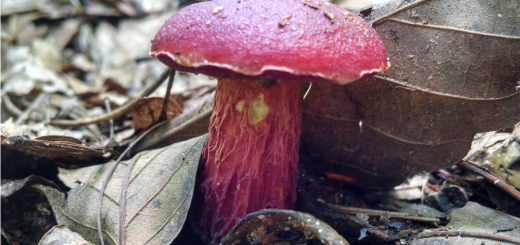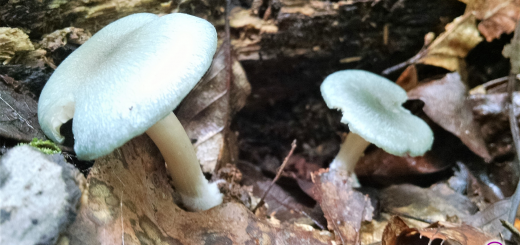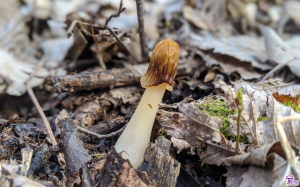#038: Mushroom Morphology: Corals and Clubs
Most mushroom-forming Orders of fungi has evolved a coral or club morphology. To simplify things, I am using “Corals and Clubs” to refer to only clavarioid (coral-like) mushrooms in the Phylum Basidiomycota. For clavarioid mushrooms in the Phylum Ascomycota, see FFF#036 (Earth Tongues) and FFF#037 (Earth Tongue Look-Alikes). Unlike the earth tongues and look-alikes, the corals and clubs produce spores externally on basidia (see FFF#012 and #013 for more on basidia and asci). If you have a microscope available, checking to see how your mushroom produces its spores can help eliminate some possibilities.
The most basic club fungi are roughly cylindrical in shape and produce spores on the upper part of the mushroom. Club fungi are often found fruiting in troops or clusters, sometimes cespitose clusters. Coral fungi have multiple cylindrical branches rising from one or several cylindrical stalks. This is a highly diverse group of mushrooms, so it is hardly surprising that there are many variations on this basic shape. The following examples will illustrate some of the diversity within the group. Clavariadelphus unicolor is one of the most unusual-looking club fungi. It has a poorly defined stipe of varying length with a bulbous, irregular head. Species in the genus Clavaria are usually cylindrical, unbranched, club fungi. Artomyces pyxidatus is a common, beautiful coral mushroom. It has many branches, most of which are roughly equal in diameter. The tips of each branch sport four, small spikes. Species in the genus Ramaria are coral fungi that usually produce many, small branches from a large, central base.
Because of the diversity in this morphological group, it is difficult to talk coherently about ecology or genetics. Coral fungi are often saprobic, but can also be mycorrhizal or even lichenized. Although all clubs and corals were once placed in a single family, it is clear now that this morphology has evolved multiple times within the Basidiomycota. Coral fungi can be found in the following orders, among others: Agaricales, Cantharellalaes, Gomphales, and Russulales. A few jelly fungi also have a clavarioid morphology, but these are grouped with the jelly fungi for their texture as well as their microscopic characteristics. The “cauliflower mushrooms” are also sometimes included with the clubs and corals, but these have flattened caps that are unlike any other coral fungi.
See Further:
http://botit.botany.wisc.edu/toms_fungi/jun2001.html
http://website.nbm-mnb.ca/mycologywebpages/NaturalHistoryOfFungi/ClubAndCoralFungi.html
http://www.mushroomexpert.com/clubscorals.html (click the links for info on relevant mushrooms)



![#027: Mushroom Morphology: Gilled Mushrooms (“Agarics”) [Archived]](https://www.fungusfactfriday.com/wp-content/themes/hueman/assets/front/img/thumb-medium-empty.png)





![#011: Characteristics of Kingdom Fungi [Archived]](https://www.fungusfactfriday.com/wp-content/themes/hueman/assets/front/img/thumb-small-empty.png)


1 Response
[…] These mushrooms are for the most part unbranched, which sets them apart from the basidiomycete corals. A few earth tongue look-alikes, like the Candlesnuff Fungus (Xylaria spp.) have minimal […]